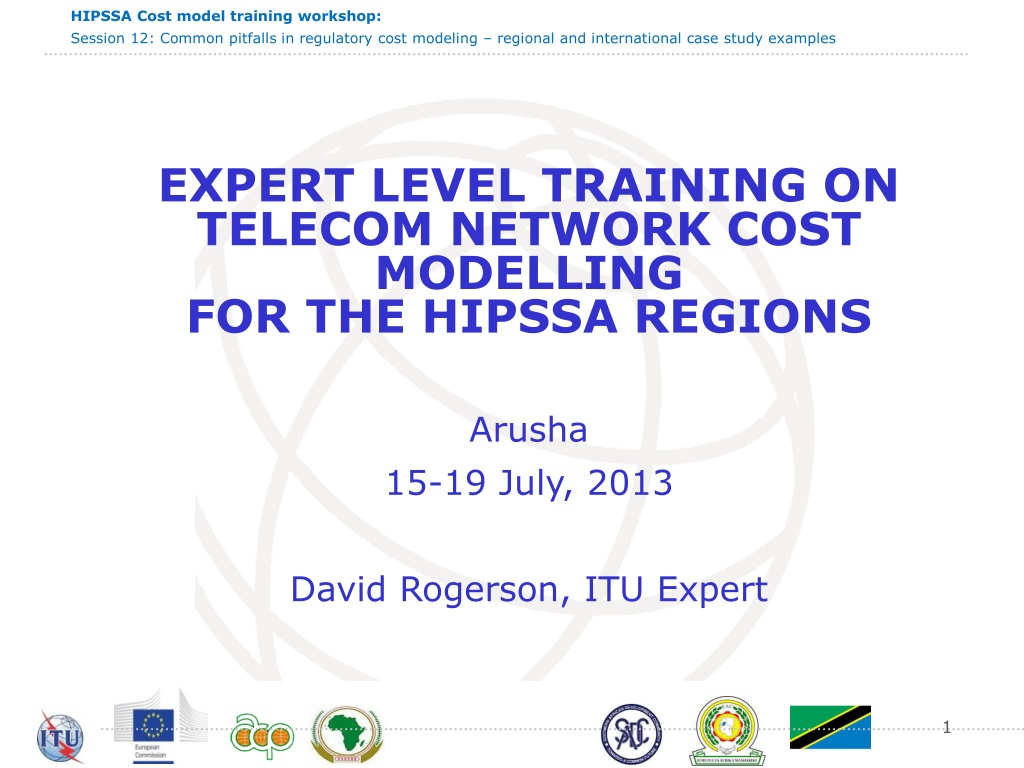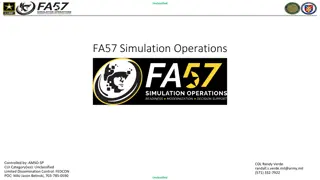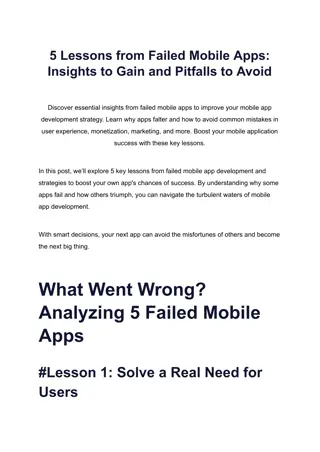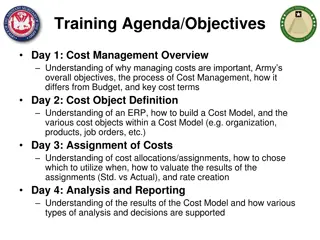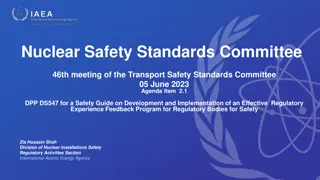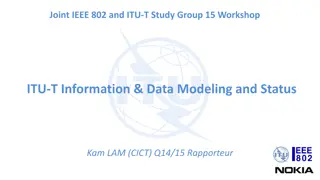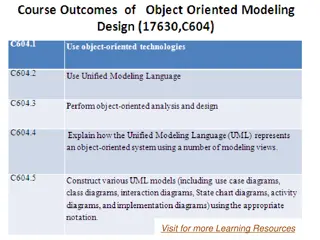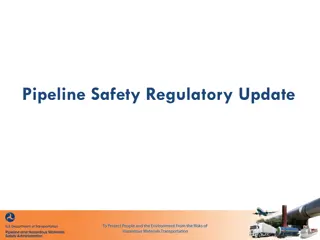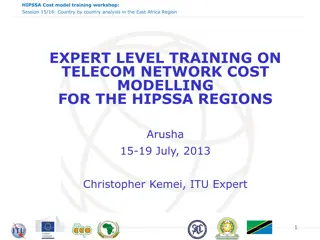Pitfalls in Regulatory Cost Modeling: Case Studies
This session explores common pitfalls in regulatory cost modeling through regional and international case study examples. Participants review real-life experiences to assess the good and bad points, learning from others' mistakes. The agenda includes examining cost modeling steps, legal basis, methodology, data sourcing, timelines, consultation, and confidentiality. Real-life case studies illustrate conflicts and resolutions in regulatory investment processes.
Download Presentation

Please find below an Image/Link to download the presentation.
The content on the website is provided AS IS for your information and personal use only. It may not be sold, licensed, or shared on other websites without obtaining consent from the author.If you encounter any issues during the download, it is possible that the publisher has removed the file from their server.
You are allowed to download the files provided on this website for personal or commercial use, subject to the condition that they are used lawfully. All files are the property of their respective owners.
The content on the website is provided AS IS for your information and personal use only. It may not be sold, licensed, or shared on other websites without obtaining consent from the author.
E N D
Presentation Transcript
HIPSSA Cost model training workshop: Session 12: Common pitfalls in regulatory cost modeling regional and international case study examples EXPERT LEVEL TRAINING ON TELECOM NETWORK COST MODELLING FOR THE HIPSSA REGIONS Arusha 15-19 July, 2013 David Rogerson, ITU Expert 1
HIPSSA Cost model training workshop: Session 12: Common pitfalls in regulatory cost modeling regional and international case study examples Session 12: Common pitfalls in regulatory cost modeling regional and international case study examples
HIPSSA Cost model training workshop: Session 12: Common pitfalls in regulatory cost modeling regional and international case study examples Agenda Aims and objectives for this session Review some real-life cost model experiences Assess the good and bad points of each Learn from other people s mistakes! 3
HIPSSA Cost model training workshop: Session 12: Common pitfalls in regulatory cost modeling regional and international case study examples Points of note All cases are true to real- life as experienced by ITU s consultants. The details are confidential so references to specific clients have been removed The authors bear no responsibility for any similarity with your own country! 4
HIPSSA Cost model training workshop: Session 12: Common pitfalls in regulatory cost modeling regional and international case study examples Cost modelling steps six of the best Legal basis Methodology Data sourcing Timelines Consultation Confidentiality Spot the link with the 7 habits described in Session 4! 5
HIPSSA Cost model training workshop: Session 12: Common pitfalls in regulatory cost modeling regional and international case study examples Case study 1 Country X Major regulatory investment for: incumbent to prepare separated regulatory accounts regulator to construct bottom-up LRIC models After 18 months of work the results from the two processes are compared and found to conflict substantially Regulator takes the following action: Chairman meets CEO of Incumbent Gentleman s agreement is reached not to introduce cost model results, and the incumbent agrees to have the separate accounts audited Interconnection rates are determined by regional benchmarks 6
HIPSSA Cost model training workshop: Session 12: Common pitfalls in regulatory cost modeling regional and international case study examples Group discussion from the regulator s perspective What went well? What went badly? How could a better outcome have been achieved? 7
HIPSSA Cost model training workshop: Session 12: Common pitfalls in regulatory cost modeling regional and international case study examples Case study 2 Country Y Regulator has appointed consultants to help it develop cost-based termination rates: A methodology is proposed and put to consultation Data is requested from all operators, but supplied by only one operator (second largest mobile operator) Models constructed and cost-based rates proposed Results were open to consultation but models were not made public because of data confidentiality Incumbent operator takes the following action: It challenges the validity of the process since insufficient time was given for data submission, inadequate data was used in the model, and the model has not been made public. 8
HIPSSA Cost model training workshop: Session 12: Common pitfalls in regulatory cost modeling regional and international case study examples Group discussion from the regulator s perspective What went well? What went badly? What should the regulator now do to resolve the situation? 9
HIPSSA Cost model training workshop: Session 12: Common pitfalls in regulatory cost modeling regional and international case study examples Case study 3 Country Z Regulator establishes requirements for cost-based termination rates: All operators to construct a FAC model file and file the results annually The models are approved by the operator s auditors and become the basis on which termination rates are set. The system has been in place for several years and has resulted in continuous decline in mobile termination rates as call volumes have risen All parties seem happy with the arrangements. 10
HIPSSA Cost model training workshop: Session 12: Common pitfalls in regulatory cost modeling regional and international case study examples Group discussion from the regulator s perspective What went well? What went badly? How could a better outcome have been achieved? 11
HIPSSA Cost model training workshop: Session 12: Common pitfalls in regulatory cost modeling regional and international case study examples Case study 4 Country A Regulator publishes costing methodology that requires bottom-up and top-down LRIC models. Consultants appointed on 4-month assignment to construct models for 1 fixed and 5 mobile operators. Project is delayed by lack of data and difficulty of constructing so many different models. After 18 months project is seriously over-budget and reconciliation of model outcomes proves impossible. Regulator establishes wish-list prices and uses models as far as possible to justify the prices. 12
HIPSSA Cost model training workshop: Session 12: Common pitfalls in regulatory cost modeling regional and international case study examples Group discussion from the regulator s perspective What went well? What went badly? How could a better outcome have been achieved? 13
HIPSSA Cost model training workshop: Session 12: Common pitfalls in regulatory cost modeling regional and international case study examples Case study 5 Country B Regulator constructs bottom-up LRIC model to set mobile termination rates for three mobile operators. Prices are symmetrical based on efficient operator the costs of the largest (70% market share operator). After objections from the smaller operators the regulator contracts consultants to build a new model based on 33% market share operator. The smaller operators complain again, arguing that each operator s actual market shares should be taken into account in establishing asymmetrical rates. Court hearings follow. 14
HIPSSA Cost model training workshop: Session 12: Common pitfalls in regulatory cost modeling regional and international case study examples Group discussion What (if any) problem was there with the type of model? What (if any) problem was there with the way the model was used? Under what circumstances are asymmetrical rates justified? 15
HIPSSA Cost model training workshop: Session 12: Common pitfalls in regulatory cost modeling regional and international case study examples Conclusions Cost models are tools rather than solutions in themselves. Too many models can be confusing and contradictory. Top-down models are easier to apply but bottom- up models give more room for considering different scenarios and sensitivities. Decide which to best and then set sail with confidence don t give up or be blown off course by the prevailing winds. 16
